6 June 2013
In response to great demand, we have decided to publish on our site the long and extraordinary interviews that appeared in the print magazine from 2009 to 2011. Forty gripping conversations with the protagonists of contemporary art, design and architecture. Once a week, an appointment not to be missed. A real treat. Today it’s Formafantasma’s turn.
Klat #05, spring 2011.
Eindhoven is a place for young people. And the thing has a rare, unexpected charm. When you touch down in this gray zone of brick and postindustrial refurbishing, you meet plenty of them. Some enter/exit the Witte Dame, the former Philips headquarters, now home of the Design Academy, an international hotbed of design. We’re up here (from down there, in Italy) to see Simone and Andrea. Their sum: Studio Formafantasma. On a morning of low cloud cover (the norm) we visit their atelier: a dusty building at the edge of the historical center of a centerless city (the exception). A sequence of room/workshops awaits us (the norm). People say the “schools” are in a state of crisis, but up here raising doubts seems legitimate. First step: explore the issue with two Italians who have refined their own image-bank by studying in a masters program a thousand kilometers from that ever-vigorous Moloch, the Italian Lifestyle (the exception). Second: try to understand what is so special about this city in black and white where the only bulbs are light bulbs (Philips, of course).
For years now there has been talk of Dutch Design as a very recognizable style in a global world where products no longer seem to have any distinctive geographical DNA: seen up close, is there an explanation for this phenomenon?
Simone: Maybe it’s simpler than it might seem. In Italy, design has its own history, consolidated over time, closely linked to industrial development. In Holland, on the other hand, design has never been and will never be connected to a logic of mass production because there is simply no production district that works for that market. This means that in Holland designers have had to find a very different role for themselves, closer to that of an artisan. Of course we can also look for other reasons, but I am convinced that the particular character of Dutch Design comes precisely from this strong link to the tradition of handicrafts. This philosophy of doing can be very liberating for someone arriving from Italy.
The Design Academy narrated by two insiders: the first week of classes?
S: We spent it in the workshop, getting our hands dirty. You arrive and no one explains anything: you just start working with materials. You have eight people around you, designers and artists, who watch you and say “No” all the time. When they don’t say “No,” they ask you “Why.” And their why is very different from the why they ask you in Italy. It is not a why that urges you to find a response to how to fit a bolt into a joint. They are asking: why do you think it is important to do that now, why do you think the world will be a better place if you do something like that? And the answers you give are not necessarily the ones everyone thinks are valid in Italy. At first the whole thing can be quite disorienting. At the Academy, the questions about design do not necessarily have to do with the commercial aspects of the product. Here in Holland no one seems to ask: how can we make this product stronger on the market?
Is that good or bad?
Andrea: Sometimes it is also a limit…
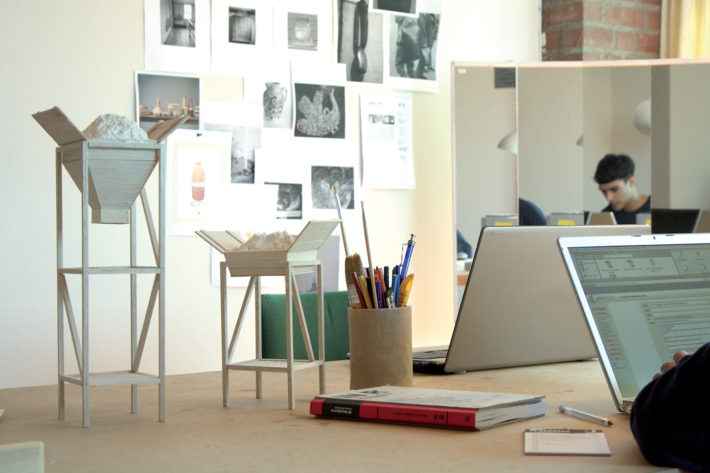
Studio Formafantasma, 2010. Photo & courtesy: Studio Formafantasma.
There are some people who studied at the Design Academy and then made products that are certainly very Dutch, but are also connected with industrial production. Like Marcel Wanders and the Moooi experience.
A: True, but he is one of the rare examples. Right from the way the program is structured, you understand that industry is a hypothesis that is hardly taken into consideration. When I went to the ISIA in Florence, class meant working with CAD. Here nobody uses a computer. If you have to make a model, you do it by hand. The approach is very different.
S: The taboos are different too.
For example?
S: If you say Dutch Design, everyone thinks about something very decorative. Actually, Dutch designers see themselves as hyper-conceptual and hyper-minimalist, and they think Italian Design chases after style. To some extent that is true.
A: Then you have to consider the Calvinist side of the Dutch, which complicates things, because it connects the idea of beauty to a moral issue.
Italian Style, in three words.
A+S: We have no idea. We are not interested in this type of definitions, we think they are rather dangerous. In Holland there are more and more design studios with names that exploit the Dutch label. When you start to define yourself like that, your work is also interpreted through a grid of meanings those labels bring with them. In the end, without realizing it, you wind up thinking that things must be done in a certain way, with a certain style, only because they are hatched in a given environment, a certain world.
Getting back to taboos: do you have themes you still consider “slippery”?
A: There are themes we are still thinking about. For example, sustainability. There is lots of talk about biodegradable materials, but that’s just a soothing term: the fact that an object can be recycled or can decompose in nature doesn’t mean it makes sense in the logic of a new definition of consumer behavior. The problem is not just how to dispose of things, but also how to purchase and consume in a different way.
Eindhoven as a factory of doing, while the world of design is smitten by interaction: where lies the future?
S: Things are also moving in that direction here…
A: …which is a mistake, in my view, because you have to have a hyper-specialized structure to move in that direction.
S: It bothers me when everything becomes a trend in design. In this moment, interaction is decidedly in fashion. I think it is interesting, but you have to make distinctions. There are good projects and bad projects.
What makes an interactive project good?
S: An interactive project is good when if it has a utopian scope. Unfortunately most of the time that doesn’t happen. There is lots of interaction that is simply without form, lacking in that expressive impact that helps you to imagine a future scenario. In the past, in architecture, the experimental projects of Archizoom and Archigram had an expressive power that allowed you to really imagine what they might become. Design made to trigger debate has to have the capacity to express a utopia, to stimulate the imagination.
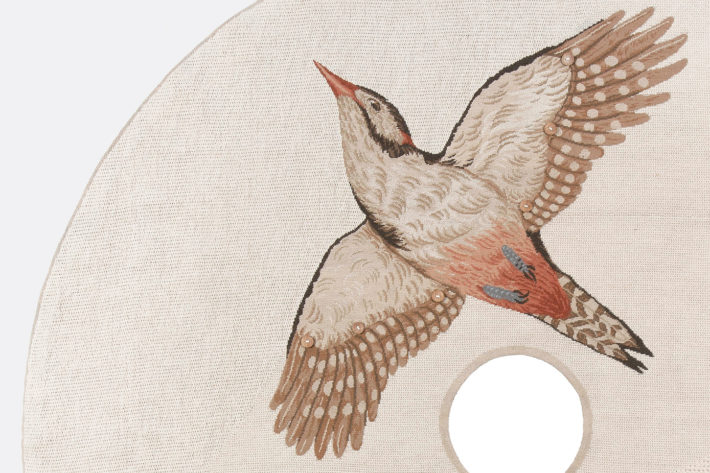
Studio Formafantasma, Pettirosso, 2011. Design for Nodus Rugs. Courtesy: Nodus Rugs. Photo: Marco Moretto.
Three objects to collect.
A+S: Anything by Mollino! The Taraxacum lamp by Castiglioni and the porcelain objects by Hella Jongerius for Nymphenburg.
Formafantasma wannabe?
A: A boyband?
S: Lady Gaga? Come on, we’re doing just fine as it is…
For Design Week in Milan you were planning a project with Droog Design, but you have postponed it. Can we offer a preview?
A: Yes. Ours is a 3D printing contribution to Make Me, a sort of platform to consider the possibilities offered by rapid prototyping and on-demand customization. In collaboration with Waag Society, Droog is working on a network of designers, distributors, producers and suppliers of materials to develop new business and product design models. Possible advantages include lower costs, less transport and less waste, new ways of designing, greater variation of types, the possibility of co-creation, lower investments due to the lack of a need for warehousing, consumer involvement. The challenge is very interesting.
In the past you have already worked with Droog, with a collection that investigated questions of mass production.
S: You’re talking about the Hidden Collection. The idea was to introduce unexpected techniques and meanings into mass production, exploring its traditional methods and mechanisms. This research led to a collection of furnishings that conceal other volumes inside them, a bit like matryoshka dolls. All the pieces are in OSB, coated with a resin. They include the Clock Inlays, which began as a new take on the cuckoo clock and wound up as a study of the possible reutilization of packing. The clock is there, but you almost can’t see it: it is contained inside boxes of chipboard inlaid with designs that represent the mechanical parts of a clock. This translates into a reversal of values: the packaging becomes more precious than the mass product it contains. That was in 2009.
What will we see in Milan?
A: This year we’ll be showing a collection of three carpets for Nodus, a 100 percent linen tablecloth collection for Flat Design, while at Rossana Orlandi we will show Botanica, a project curated by Marco Petroni made for Plart, a foundation in Naples for the study, cataloguing and conservation of art and design works made with plastic materials. We are also working for Dilmos, but everything is still in progress!
Botanica, a marvelous name: I imagine there’s a story to tell…
A: Of course. Do you know Charles J. Moore? He is an oceanographer who was returning home across the North Pacific Gyre, after the Transpac regatta in 1997, when he noticed a huge expanse of floating rubbish. A similar patch of plastic garbage also exists in the Atlantic. This made a great impression on us. The recent ecological disaster in the Gulf of Mexico reinforced the idea that the ecosystem is paying far too high a price for the satisfaction of the needs of consumption. Our perception of plastic materials has drastically changed over time. Once seen as the material of the future, synthetic polymers are now the symbol of an era that is no longer exciting. Our idea was to investigate just when, over the course of history, the natural polymers were abandoned in favor of oil-base plastics. It is not a question of nostalgia. The goal is to rediscover the historical quality of materials, offering users a different perception of plastics. The design of the pieces in the collection underlines the botanical and animal origin of the resins, thanks to organic details, while the color range is entirely based on a natural amber tone, combined with other traditional materials like wood, ceramics and metal.
All this from Eindhoven. Bruce Chatwin once asked: “What am I doing here?”
S: Why are we here? Good question.
A: After having taken our Masters degrees at the Design Academy it didn’t seem right just to leave. The design scene here in Eindhoven is starting to get interesting. The Dutch state offers support for young designers and…
S: Well, explained like that it sounds like Eldorado: unfortunately even here the grants are fewer than one might expect. The designer’s life is not so easy, in Holland or anywhere else. The difference is that in Eindhoven we can rent a studio of a certain size at a more reasonable price, and that allows us to make laboratories for research and for working with materials…
A: …to be honest? The biggest help came from the decision to leave. As soon as we decided to “go abroad” it really became an action, believing in what we were doing: this helped us a lot.
What did you leave behind and what have you found?
A: Before coming to Eindhoven we lived in Florence: nothing could be more Italy, except maybe Venice… Changing helped us. It is like the desire to enter a plain white room: clean air, you take a deep breath, of relief, and get going. Italy, in some ways, is a fantastic place. But it is as if all that beauty you have around you ends up becoming background noise, at times. Here, where there is little or nothing, it is easier to focus. You don’t have much to do, there are no distractions, you spend your time working: from Monday to Sunday, with a very short summer. You get up in the morning and go to the studio, even at weekends.
S: The positive thing is that here no one is scared of destroying and rebuilding. You can also see that in the Strjip, the former Philips research area now being renovated: yesterday it was an advanced center; today, after the forced migration of Philips, and the demolition work, it contains new buildings, without a past, that contain studios of many young and not so young designers. Many former students – like Kiki Van Ejik – have decided to stay here. Eindhoven is not a typical Dutch city: it does not have brick houses, bow windows, Rembrandts, the canals of Amsterdam, but it is very dynamic. Also in the little things. Take our atelier: we pay one hundred and fifty euros per month. It is a space we could only dream about in Italy: if you do industrial design maybe you can get by with a room and a good computer, but if you do design the way we do it is important to be able to organize the whole process. Having a lab for materials is a necessity.
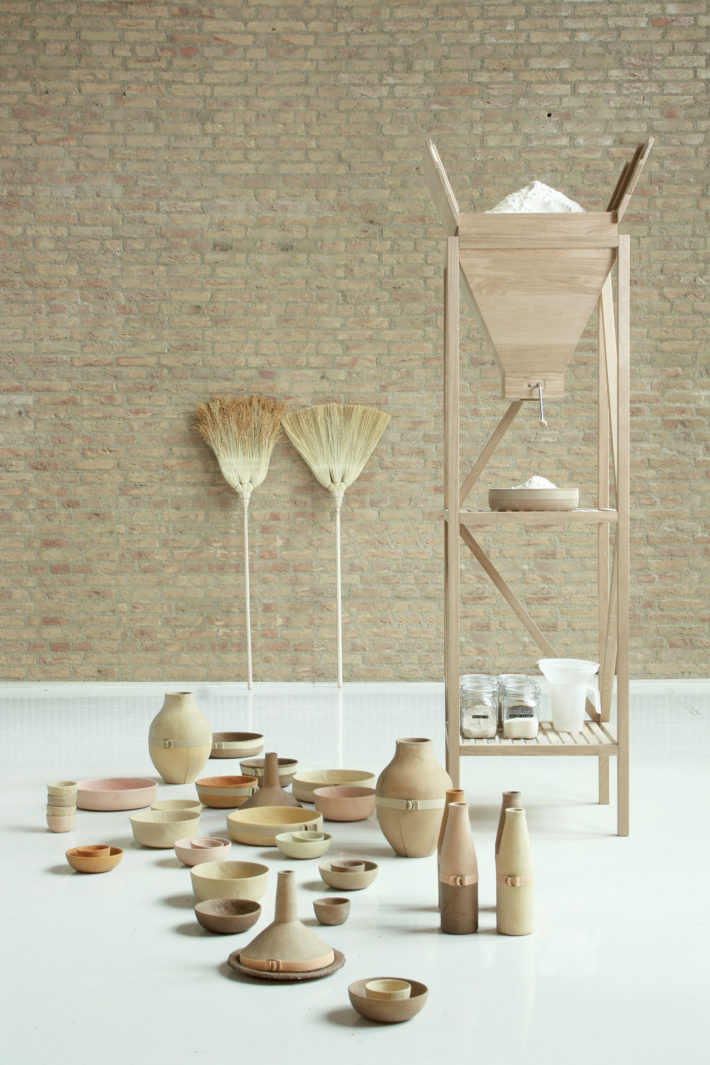
Studio Formafantasma, Autarchy, 2010. Photo & courtesy: Studio Formafantasma.
If you had to recommend specialized training for a young designer: why here and not London, another center of advanced education?
S: For economic reasons. We were also accepted at the Royal College of Art, but then we came here because London was more expensive.
A: Eindhoven is a small city: this small size, in relation to the large number of creative people, gives you more freedom to do things, multiplying possibilities for interchange: there are more than forty designers working in this building, for example. There are lots of people around you who are doing the same thing. It happens in London too, but it is less concentrated there.
Is design product or process?
S: At the moment it’s hard to find a balance. Process is the central focus of designers, and it is often presented as an end in itself. The attention paid to process is interesting and reflects the desire of the user to know more about things. All the objects that surround us are increasingly anonymous, lacking in information. I believe that insisting on the value of processes helps to explain to users what lies behind a project. But at times people insist so much on the process that it becomes content, almost overshadowing the object itself, underestimating it. We shouldn’t forget that an object has a physical presence that has a direct impact on reality. If you only concentrate on the process you run the risk of creating an object that is too hermetic, but if you avoid the process you create an object that is without information. In short, it is very difficult, I’d say it is one of the crucial issues of contemporary design.
Today designers, including those who work for industry, are expected to have a very high level of process expertise. New industrial realities are operating on the market without industrial backing. When a designer is commissioned to do a project, he often has to somehow identify and guarantee a chain of different actors in the process, sometimes imposing a final cost. What do you think about this situation?
A: This type of dynamic also exists in productions commissioned by galleries that produce art-design in limited editions. It is all very different from the seventies, when companies were open to innovation and did research on their own. But it is also true that the success of a project depends to an increasing extent on the relationship you manage to establish with your client. When we worked with Droog Design, the thing that really made the difference was the desire to do a project, apart from the cost. The London-based brand Established & Sons works even though it has a very high price range, because they have been able to attract a clientele that pays attention to style.
Design galleries and art-design: a phenomenon on the rise, or in decline?
A: It is a phenomenon that has always existed. The economic crisis has obviously made things more complicated, and the idea of superstar designers no longer interests anyone. The market exists, but it is a niche. The collectors are getting more refined and are buying design with the same attitude as those who invest in art. This allows designers to expand their field of research.
Let’s talk about Autarchy, your first post-masters project, which immediately met with international acclaim.
A: With Autarchy we tried to imagine a society that produces the everyday objects it needs only with its own resources. The collection is composed of vases, bowls and lamps made with hand-kneaded bio-material. To be precise, it is 70 percent sorghum flour, 20 percent agricultural waste and 10 percent natural lime. To color these materials we boiled vegetables and spices. The pieces are shaped and then left to dry, naturally. The final objective was to demonstrate that with a few materials you can obtain aesthetically pleasing objects that are also functional and sustainable. A conscious society should create a new generation of products, closely linked to an idea of light technology.
The genesis of the project?
S: It was 2009, we were in Sicily, at Caltagirone, an important ceramics district: we were working on Moulding Tradition, our masters project. One day we went to Salemi, a small town in the eastern part of Sicily, where there is a traditional celebration of the Feast of St. Joseph. There is also an amazing archive at Salemi. Looking through it, we found out about the ways ordinary people made use of their ability to make bread. Beyond the taste for the naïf, comparison of this process quality with a certain type of ceramics production led to amazing results. We were surprised by the spontaneity, without artistic pretension.
A: When we got back to Eindhoven we tried to make a bowl, with nothing. We used salt and flour, then the object just sat there. We completed our thesis project and then, after some time had passed, we looked at it again, and asked ourselves: why don’t we try to go further, as in Salemi, where they do what they do with nothing? We explored the web and found a “second life” filled with people who swap recipes for making pasta alla carbonara, homemade bioplastic and much more, underlining the need to share and to be part of a process. The final step was to give this intuition a wider context. When we did a show at Rossana Orlandi, in Milan, we could have arranged everything on the surface of a table, but instead we chose a more utopian setting, to emphasize how Nature can produce food, but also objects.
How did that go?
A: For us it was very interesting to build a context around the project: that might be the thing that interests us most. In design there is not just the moment of consumption. You can communicate ideas in a more complex, more visionary way. For Autarchy the challenge was to make an exhibit of simple objects, like a sorghum broom or a loaf of bread. And to do it not in a museum, but during a fair of industrial design.
S: People were not expecting it. Many people were quite surprised that even things like that could be called design. Especially the companies. Our objects are archetypes: we didn’t do research on forms, but on materials.
A: Many designers, at this point, work only on finding new forms. That is not the case with us. In any case, many people think our work is very polished.
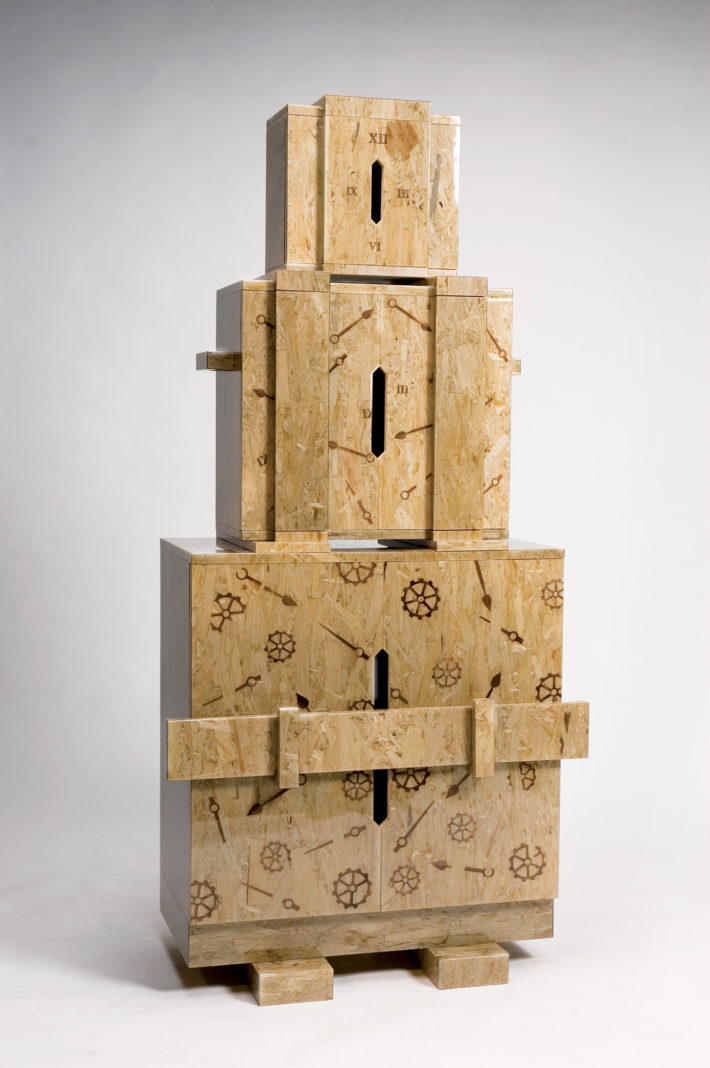
Studio Formafantasma, Hidden Collection, 2009. Photo & courtesy: Studio Formafantasma.
And is it?
S: Here’s a little secret: in Milan the vases and bottles were not water-tight. Now we have solved the problem, so we can say that!
Forgive my curiosity: how?
A: Thanks to Colophony.
Which is?
A: Pine resin.
How and where did you discover the existence of Colophony?
S: Library, blog: you search online. Things are much simpler than they seem.
What’s it like working as a duo: an unfathomable relationship…
S: We fight a lot.
A: It is hard, but it’s going much better now. We finally have an assistant…
S: It’s interesting to have a person who works in the studio, to get another perspective. We’re usually shut up on our own: we understand each other, without too many explanations.
A: It’s true: we can give each other very abstract feedback and we understand each other. For example, we might say: it has to be triangular – a random word – and it is immediately understood. Unfortunately this wordless communication becomes a problem when we have to talk with a client: we are a disaster.
S: We don’t like to communicate about what we are doing. Or, more precisely, we’re not used to it: for us, the story of a project comes almost a posteriori, when the process is finished, when we somehow try to reconstruct the path.
How do you work on a project: who does what?
S: We draw very little, the drawing comes at the end.
A: The key moment is the search for the material. There is a moment in which the frustration of not being able to go forward is very strong: we let ourselves be fascinated by an idea but then we are not able to translate it into an object…
S: To be schematic: usually one of us has an intuition and communicates it to the other one. The other one rejects or approves it. It is interesting when we do research with images: we have everything there in front of us, and the project starts to find its path, sometimes in unexpected ways.
A: The best moment is when the object is there and we start to refine it, to put it into context, we start to understand what has come to life in a spontaneous way.
S: Andrea is very good at understanding when there is an idea or when there isn’t! The latest idea rejected? I don’t remember: it was eliminated! At times you have intuitions, then you look at them and say: no, that’s not us. It happens more and more. They are not bad ideas, but they don’t tell our story.
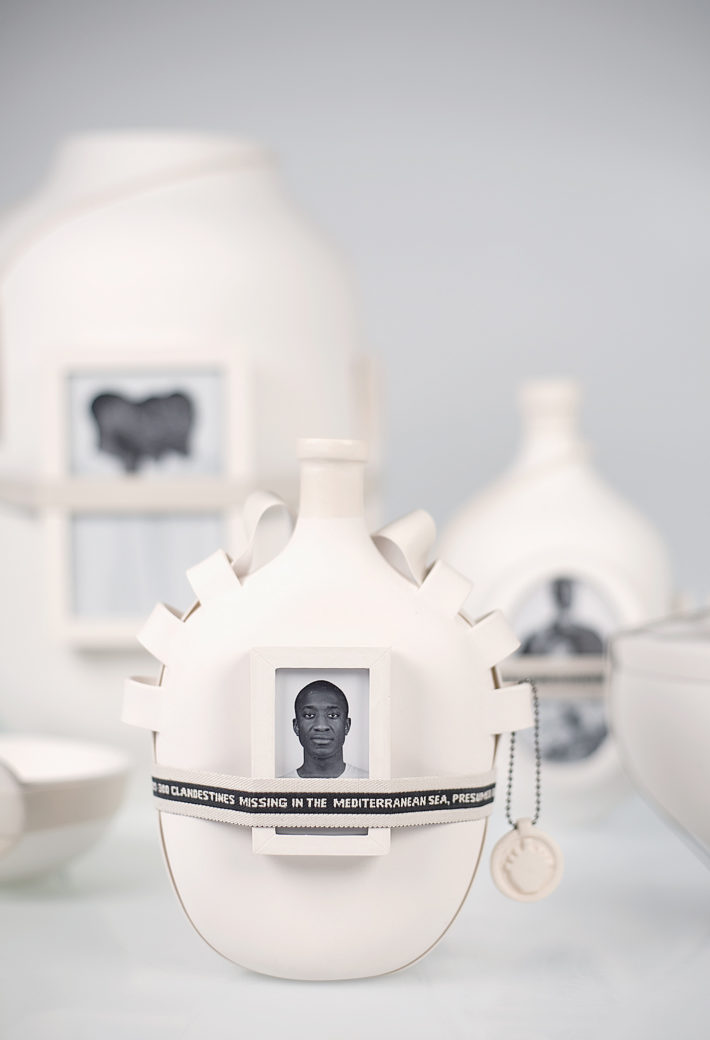
Studio Formafantasma, Moulding Tradition, 2009. Courtesy: Studio Formafantasma. Photo: Luisa Zanzani.
Your next projects?
A: In June we will be at Design Miami/Basel, represented by Libby Sellers, the founder of the gallery of the same name, former curator of the Design Museum of London. We met Libby at the Design Academy, when we presented Moulding Tradition. With her we decided to show it at Basel, together with the new project Colony, three tapestries developed in collaboration with the Textielmuseum of Tilburg. Both Moulding Traditionand Colony have a strong political connotation and outline a scenario where the idea of cultural identity linked to national geographical borders is displayed in all its complexity. While Moulding Tradition refers the Afro-Arabian invasion of the Mediterranean in the tenth century, comparing it with the present movements of immigration, Colony will narrate the traces of Italian colonialism in Libya, Eritrea and Somalia. Old and new maps, historic dates and contemporary news, modernist architecture: everything will be woven together in the attempt to construct new visual and conceptual patterns.
If I sign up for your fan club and tell you you’re really talented what would you respond?
A+S: Susanna, what can we say? Thanks! The next time you come to Eindhoven we’ll cook you some gnocchi alla Norma (Venetian+Sicilian style)…
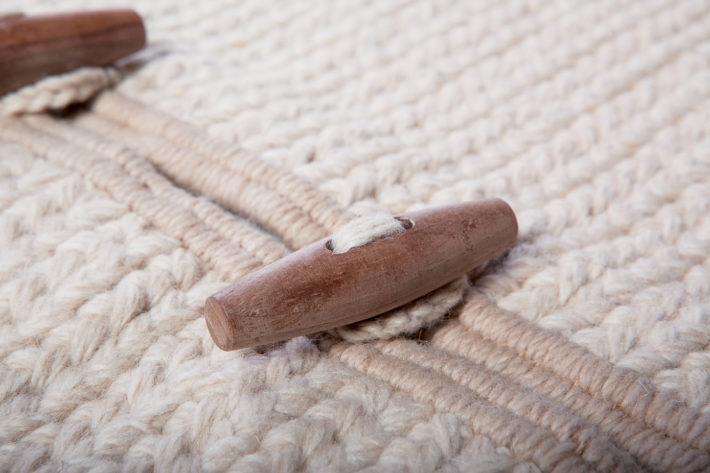
Studio Formafantasma, Pettirosso, 2011. Design for Nodus Rugs. Courtesy: Nodus Rugs. Photo: Marco Moretto.
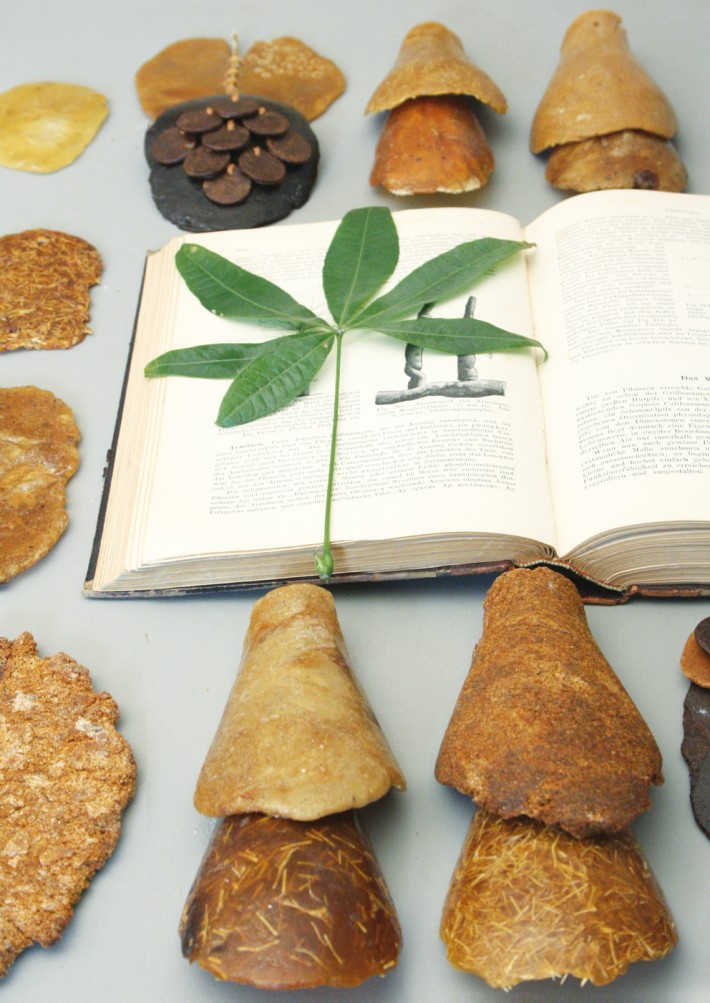
Studio Formafantasma, Botanica, 2011. Photo & courtesy: Studio Formafantasma.